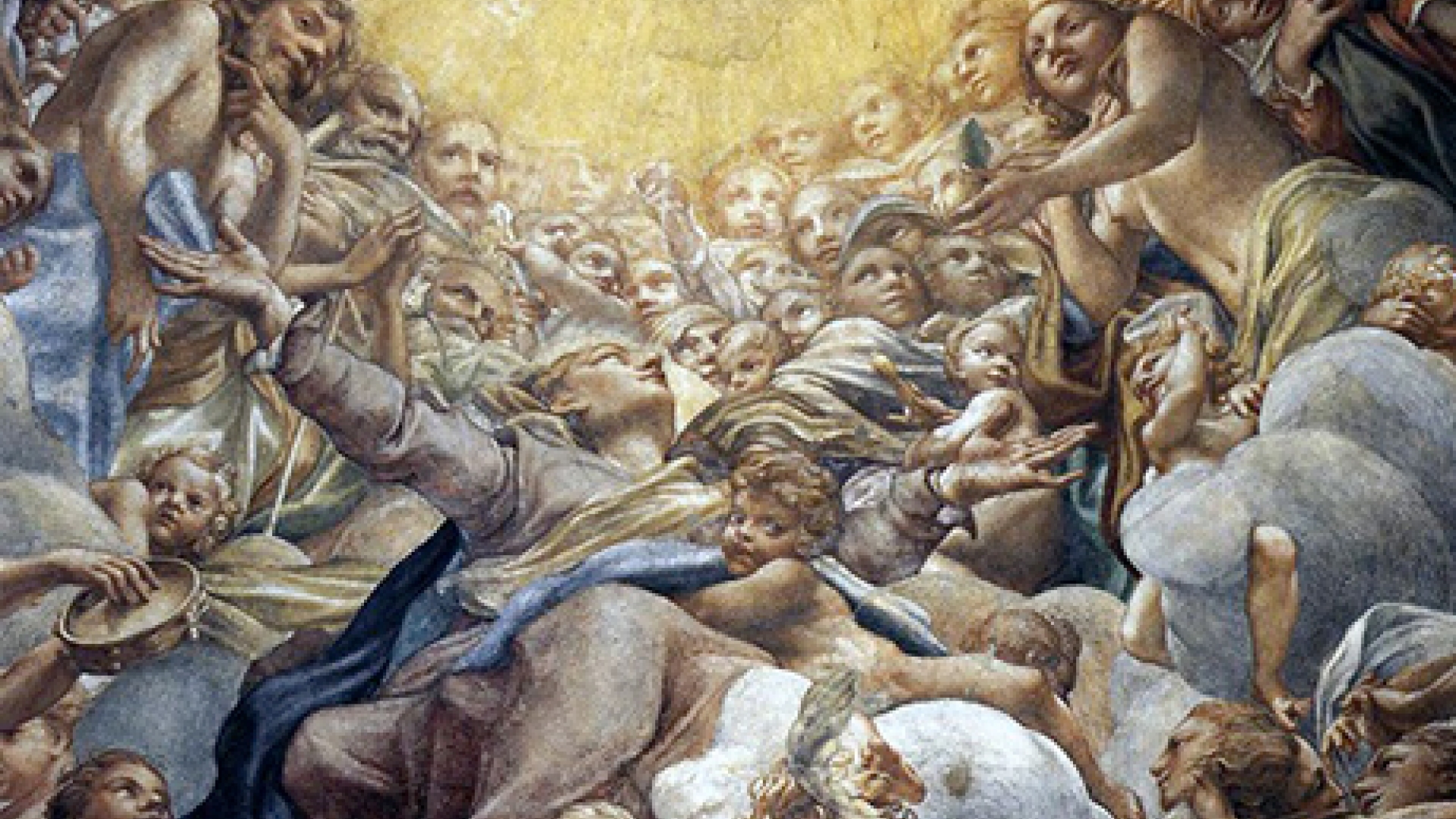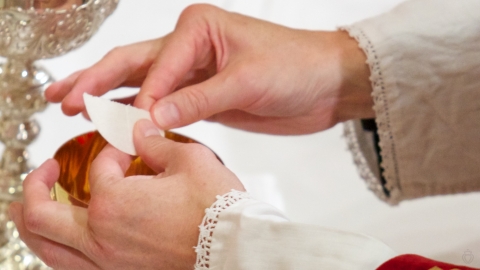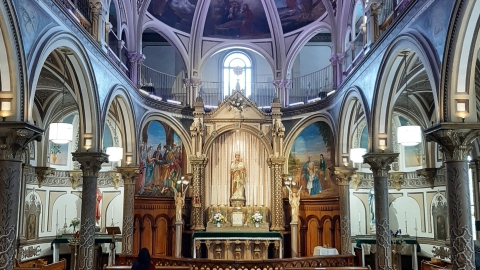On the Liturgy and Theology of the Assumption

A brief liturgical and theological account of the Feast of the Assumption of the Blessed Virgin Mary
August 15 marks the Feast of the Assumption, the principal Marian celebration of the liturgical year. Pope Pius XII, in his Apostolic Constitution Munificentissimus Deus, declared infallibly that the Feast of the Assumption is a dogma.
Here is a further account of this definition, as provided in the sixth reading from Matins according to the Breviarium Romanum.
Since indeed the universal Church hath at all times and throughout the ages manifested faith in the bodily Assumption of the Blessed Virgin Mary, and since the Bishops of the whole world by an almost unanimous agreement have petitioned that this truth, which is enshrined in Sacred Scripture and deeply rooted in the souls of Christ's faithful, and is also truly in accord with other revealed truths, should be defined as a dogma of the divine and Catholic Faith, Pope Pius XII, acceding to the requests of the whole Church, decreed that this privilege of the Blessed Virgin Mary be solemnly proclaimed, and thus, on the first day of November of the year of the Great Jubilee, nineteen hundred and fifty, at Rome, in the open square before the Basilica of St. Peter, surrounded by a throng of many Cardinals and Bishops of the Holy Roman Church who had come from distant parts of the earth, and before a great multitude of the faithful, with the whole Catholic world rejoicing, proclaimed in these words and with infallible statement the bodily Assumption of the Blessed Virgin Mary into heaven: Wherefore, having offered to God continual prayers of supplication, and having invoked the light of the Spirit of Truth, to the glory of Almighty God who hath enriched the Virgin Mary with his special favor; in honor of his Son, the immortal King of ages and victor over sin and death; for the increase of the glory of the same august Mother, and for the joy and exultation of the whole Church, by the authority of Our Lord Jesus Christ, of the holy Apostles Peter and Paul, and by our own authority, we pronounce, declare and define it to be a divinely revealed dogma that: The Immaculate Mother of God, Mary ever Virgin, was, at the end of her earthly life, assumed body and soul into heavenly glory.
Although certain non-Catholics have attempted to deny the historicity of this miraculous event on the basis that it is not contained in Scripture, Holy Tradition and the writings of many Fathers, including Ss. John Damascus, Andrew of Crete, Modestus of Jerusalem, and Gregory of Tours, overturn such objections. Moreover, Eastern and Western liturgical history testifies to the feast’s early celebration. For example, according to the Life of St. Theodosius the Cenobiarch, the Assumption of Mary was celebrated in Palestine in the fifth century. This celebration quickly made its way westward so that by the time of Pope Sergius I’s reign between the years 687 and 701, the feast was held with much solemnity in Rome.
Among Eastern Catholics following the Byzantine Rite, this feast is known as the Dormition (“Falling Asleep”) of the Mother of God and was historically preceded by a 14-day period of fasting and abstinence. While some polemically minded Eastern Orthodox have attempted to pit the “Greek Feast” of the Dormition against the “Latin Feast” of the Assumption, let it be recalled that these feasts celebrate the same event, only with slightly different theological understandings.
For while Pius XII’s dogmatic definition left open the question of whether or not the Blessed Virgin experienced an earthly death before being assumed into Heaven, Eastern Christian interpretation of this event holds that Our Lady first underwent death prior to her Son receiving her soul and taking her soul and resurrected body up to Heaven. Many Latin Catholics, however, hold to the equally permissible view that Mary was assumed into Heaven without undergoing death. Despite these different opinions, all Catholics—Eastern and Western—affirm in full that Our Lady’s body and soul ultimately reside with her Son in Heaven.
In closing, let us reflect on how both the Collect for the Mass of the Assumption and the Troparion (primary liturgical hymn) of the Divine Liturgy of the Dormition honor the Blessed Virgin Mary in joy and truth.
Almighty, everlasting God, Who took up, body and soul, the immaculate Virgin Mary, Mother of Thy Son, into heavenly glory, grant, we beseech Thee, that, always devoting ourselves to heavenly things, we may be found worthy to share in her glory.
In giving birth thou didst preserve thy virginity, and in thy falling asleep thou hast not forsaken the world, O Mother of God. Thou hast been translated to life as thou art the Mother of Life. And by thy supplications thou dost deliver our souls from death."



